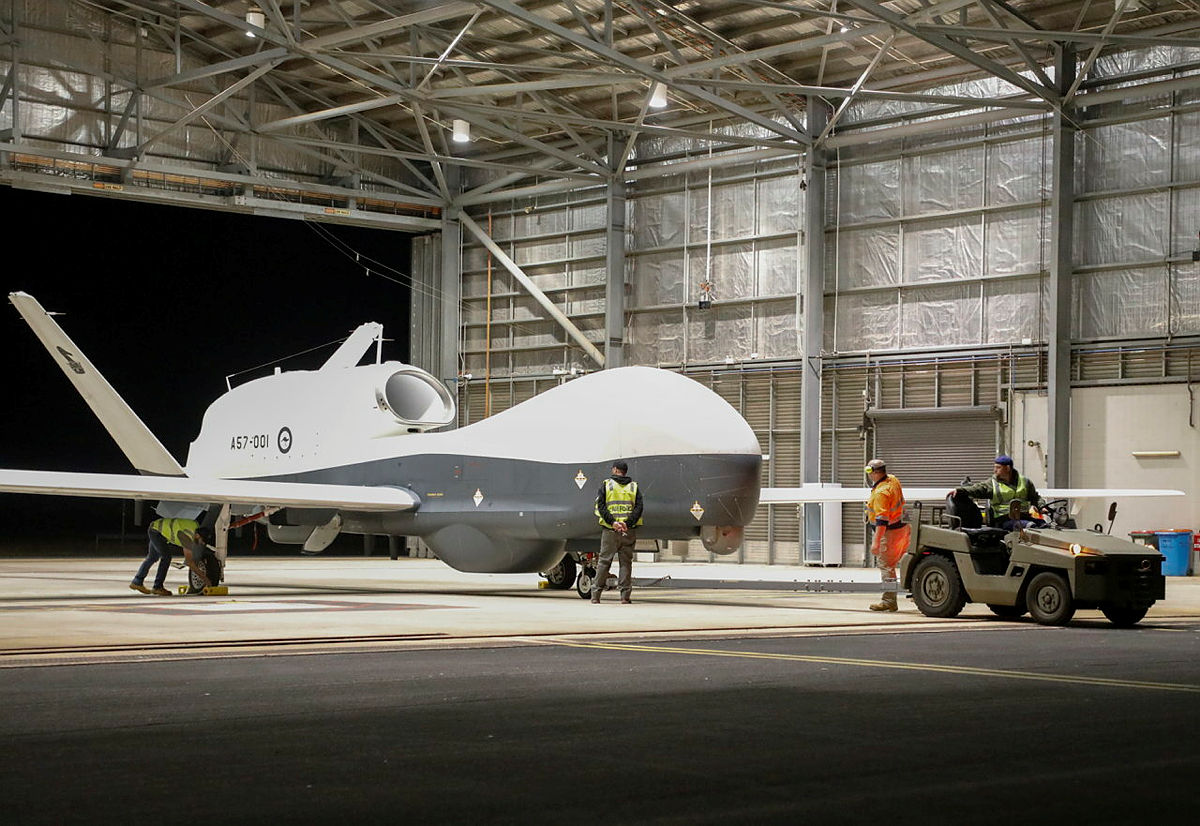The Royal Australian Air Force (RAAF) welcomed its first MQ-4C Triton Remotely Piloted Aircraft System at RAAF Base Tindal in the Northern Territory today. This advanced aircraft marks a new era in Australia’s surveillance capabilities, providing unprecedented long-range and persistent surveillance across vast maritime regions and areas of national interest. The MQ-4C Triton, a high-altitude, long-endurance unmanned aerial vehicle (UAV), is set to revolutionize how Australia monitors and secures its maritime approaches. Operated by the reformed Number 9 Squadron, based at RAAF Base Edinburgh in South Australia, the Triton will work in tandem with the P-8A Poseidon aircraft to deliver a comprehensive Maritime Intelligence, Surveillance, and Reconnaissance (ISR) capability. This synergistic operation, known as the ‘family of systems,’ will significantly enhance the Australian Defence Force’s (ADF) ability to protect national interests.
The Triton, developed by Northrop Grumman for the United States Navy under the Broad Area Maritime Surveillance (BAMS) program, is designed to provide real-time ISR over expansive ocean and coastal regions. Its capabilities include continuous maritime surveillance, search and rescue missions, and complementing the Boeing P-8 Poseidon maritime patrol aircraft. By building on elements of the RQ-4 Global Hawk, the Triton features enhancements such as reinforced airframe and wings, de-icing systems, and lightning protection systems, enabling it to descend through cloud layers for closer inspection of maritime targets. One of the standout features of the MQ-4C Triton is its endurance. The aircraft can stay aloft for over 30 hours at altitudes up to 55,000 feet, reaching speeds of up to 330 knots. Its advanced surveillance sensor, the AN/ZPY-3 Multi-Function Active Sensor (MFAS) X-band AESA radar, offers a 360-degree field-of-regard and can survey up to 2,700,000 square miles of sea in a 24-hour period.

The Triton’s sensor suite is particularly advanced, capable of tracking ships by gathering detailed information on their speed, location, and classification. The radar, in its inverse synthetic aperture mode, can identify targets under all weather conditions, making it an invaluable asset for continuous maritime surveillance. Additionally, the Triton’s high-definition radar imagery and advanced Automatic Identification System (AIS) software allow for autonomous classification of targets, minimizing the need for direct operator intervention. Designed to withstand the rigors of various environmental conditions, the Triton can rapidly descend to lower altitudes for closer inspections, a capability the Global Hawk lacks. It is equipped with robust anti-icing systems and a reinforced fuselage to endure hail, bird strikes, and lightning. At lower altitudes, the Triton employs the Raytheon MTS-B multi-spectral EO/IR sensor, similar to the one used on the MQ-9 Reaper. This sensor includes laser designator, pointer, and range-finding abilities, and can automatically track targets detected by the MFAS, providing live video streams to ground forces.
Australia has long considered the MQ-4C Triton both for military operations and customs enforcement. Despite some initial skepticism from senior customs officials about its effectiveness in detecting small boats through cloud cover, the Triton has proven its worth. The decision to integrate the Triton into the RAAF’s fleet aligns with Australia’s strategic objectives and reflects the evolving nature of maritime surveillance and security. In 2018, Prime Minister Malcolm Turnbull announced the purchase of the first of six MQ-4C Tritons, with the possibility of acquiring a seventh. As of 2023, Australia had placed orders for four Tritons, with plans to expand the fleet to meet the RAAF’s requirement for six to seven aircraft. The re-establishment of Number 9 Squadron in June 2023 was a strategic move to prepare for the Triton’s arrival, ensuring that the RAAF is ready to fully leverage this advanced technology.
















